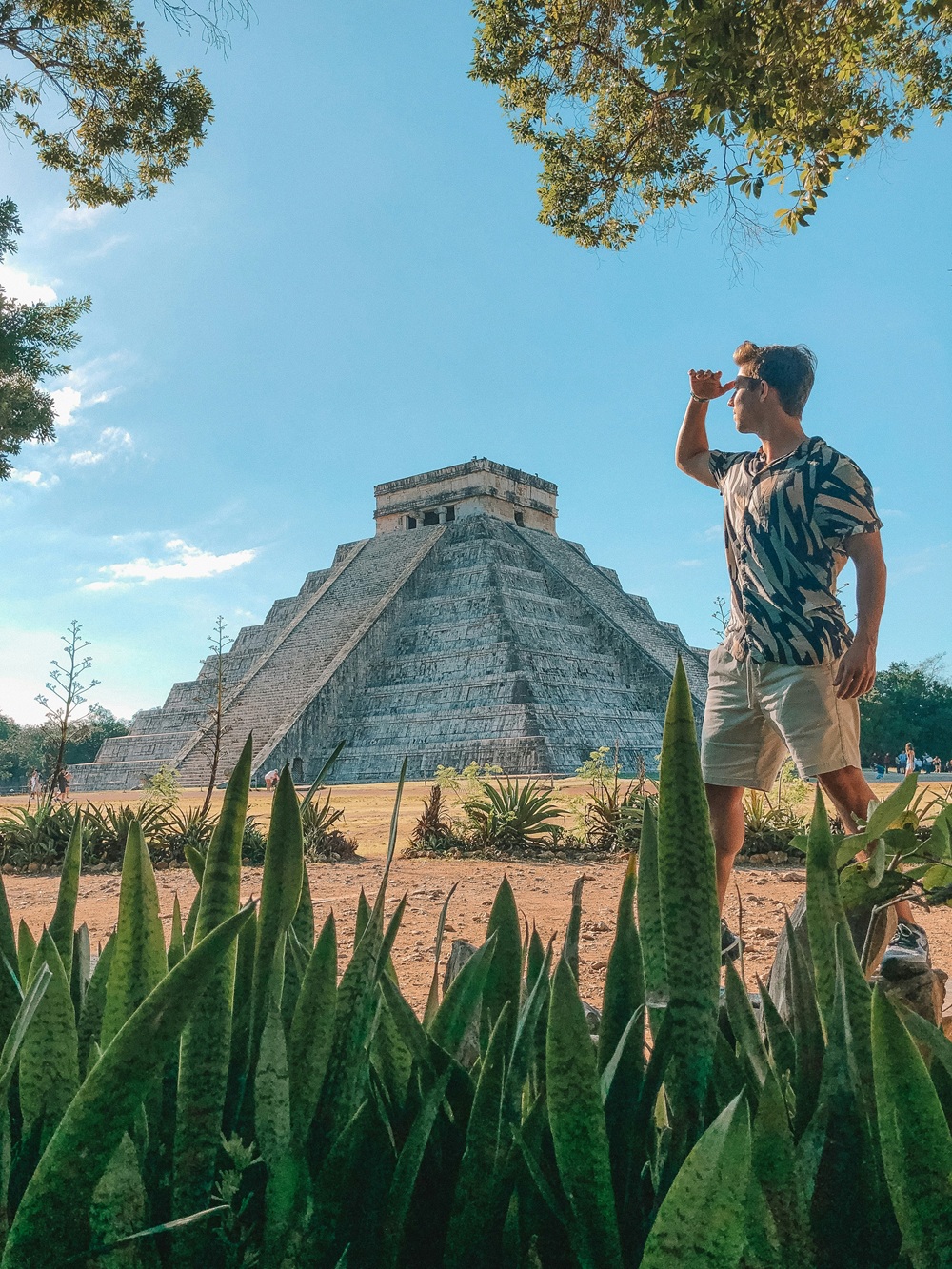Chichén Itzá
1. Mexico — a land of vivid impressions and unforgettable journeys through the ancient worlds of the Maya and Aztec civilizations. Countless travelers from across the globe come here to touch the mysteries of the past, immerse themselves in its cultural heritage, and witness the living traditions of this land. It is here that one of the Seven Wonders of the World rises — the pyramid of El Castillo in Chichén Itzá, where, according to legend, Kukulcán, the Feathered Serpent — god of light, rain, knowledge, and life — descends from the heavens. Twice a year, during the equinoxes, the silhouette of the serpent slithers down the pyramid’s steps. The sun casts its shadow in such a way that it appears as though a living serpent returns to humankind to remind them of wisdom and light. Kukulcán came to the Maya to teach them how to build cities, cultivate maize, understand the stars, and live in harmony with nature. Before departing, he promised to return when his people would need him most. And so, every year, on March 21 and September 21, thousands of visitors from every corner of the planet gather to witness this mystical descent of the serpent — a breathtaking union of myth, architecture, and astronomy.
2. History. The city of Chichén Itzá was founded between the year 600 and the end of the first millennium CE, on the Yucatán Peninsula in southern Mexico. Its location was chosen for three large natural water reservoirs that provided a steady supply of fresh water year-round. The Maya were extraordinary builders, mathematicians, and astronomers. Tens of thousands of them participated in constructing this great city, which became a hub for both trade and sacred ceremonies. Chichén Itzá was built for priests and rulers, while the common Maya people worked the fields, tended livestock, and served their leaders. The Maya civilization was one of the most powerful empires of its time, and its sudden collapse at the end of the 9th century remains one of history’s greatest enigmas. Scholars suggest that drought or famine might have caused this catastrophe — yet even these theories fail to explain how such an advanced civilization could vanish so quickly. Only a fraction of the Maya population survived, later to be conquered by Europeans. By the 16th century, the descendants of this once-great civilization had fallen under full Spanish control — in 1533, the Yucatán was completely overtaken by the conquistadors.
3. What Scientists Discovered. An extraordinary finding was made beneath the pyramid in 2015. The National Autonomous University of Mexico conducted a study using cutting-edge GPR (Ground Penetrating Radar) and electromagnetic tomography. They discovered a natural karst sinkhole — a cenote — directly beneath the archaeological monument, measuring about 25 meters wide and 20 meters deep. As all cenotes on the Yucatán Peninsula are interconnected by underground rivers, this one too was filled entirely with water. Remarkably, despite resting above a water-filled cavern for more than a thousand years, the pyramid has remained perfectly stable, a testament to Maya engineering genius. The center of Kukulcán’s pyramid aligns precisely with the center of the cenote below, suggesting the Maya intentionally built it this way. To them, such alignment held deep ritual and spiritual significance — symbolizing a sacred connection between the heavens and the underworld. They believed this place was an entrance to Xibalba, the realm of the dead. This discovery has shed new light on the Maya’s architectural mastery and cosmological vision.
4. The Magic of Numbers. The Maya were exceptional mathematicians and astronomers, and they infused their “magic of numbers” into their architecture. The Temple of Kukulcán is a perfect example. The pyramid has four sides, each 24 meters high, with steep stairways of 91 steps. Multiply that by four sides, and add the platform on top — 364 + 1 equals 365, the exact number of days in a solar year. The pyramid also reflects the Maya calendar’s structure: its nine terraces, divided into two, form 18 sections — representing the 18 months of the Maya year — while 52 carved stone panels symbolize the full calendar cycle of 52 years.
5. What You Can See at the Chichén Itzá Archaeological Complex:
1. The Temple of Kukulcán — the most iconic structure and symbol of Chichén Itzá.
2. The Temple of the Warriors — with its impressive Hall of a Thousand Columns, and the nearby Temple of the Jaguars.
3. The Caracol Observatory — an ancient astronomical tower.
4. The Great Ball Court — 135 meters long, the largest in Mesoamerica. The sacred ball game’s goal was to strike a four-kilogram rubber ball through a stone hoop high on the wall using only the body — hands, elbows, or back. The losing team was offered in sacrifice to the gods.
5. The Sacred Cenote — once used for ritual offerings and sacrifices.
Throughout the site, visitors can also explore the Nunnery Complex, the Red House, La Iglesia, the Tomb of the High Priest, the North Temple, three platforms (of Skulls, Jaguars, and Venus), and the lively Mercado — a colorful souvenir market where echoes of ancient splendor meet the rhythm of modern Mexico.


